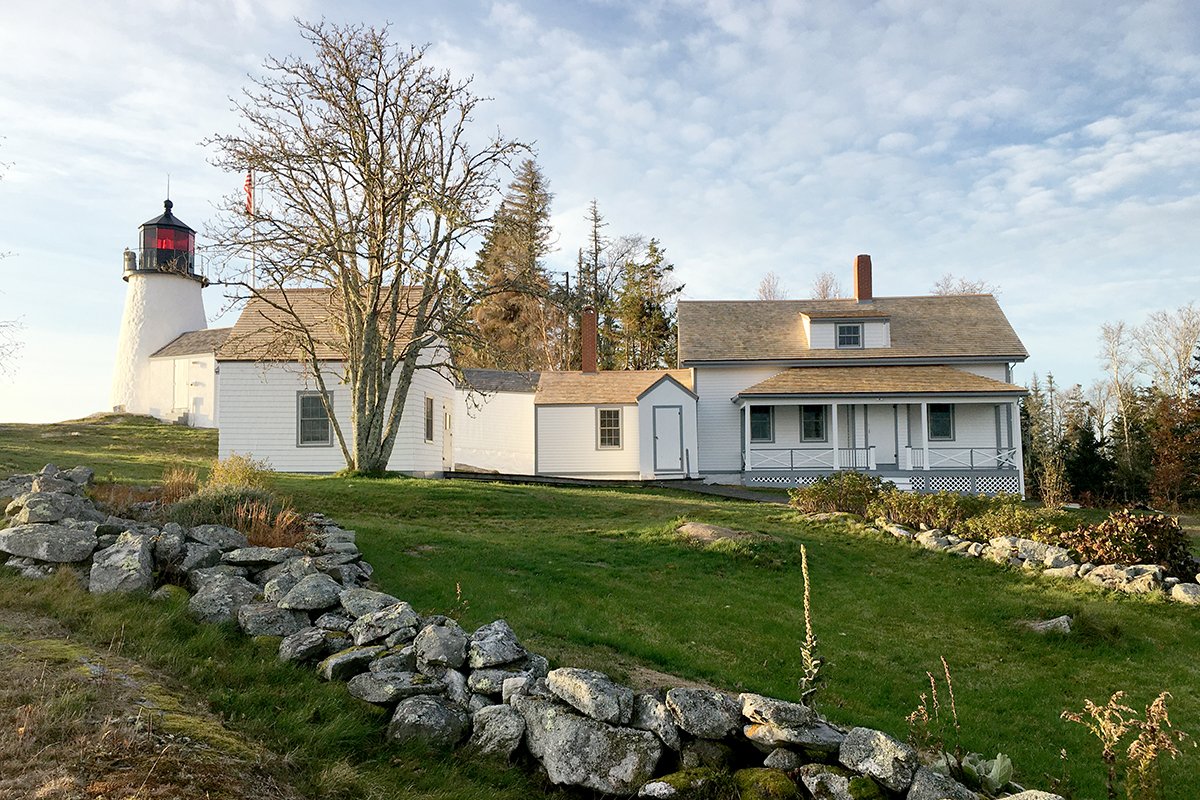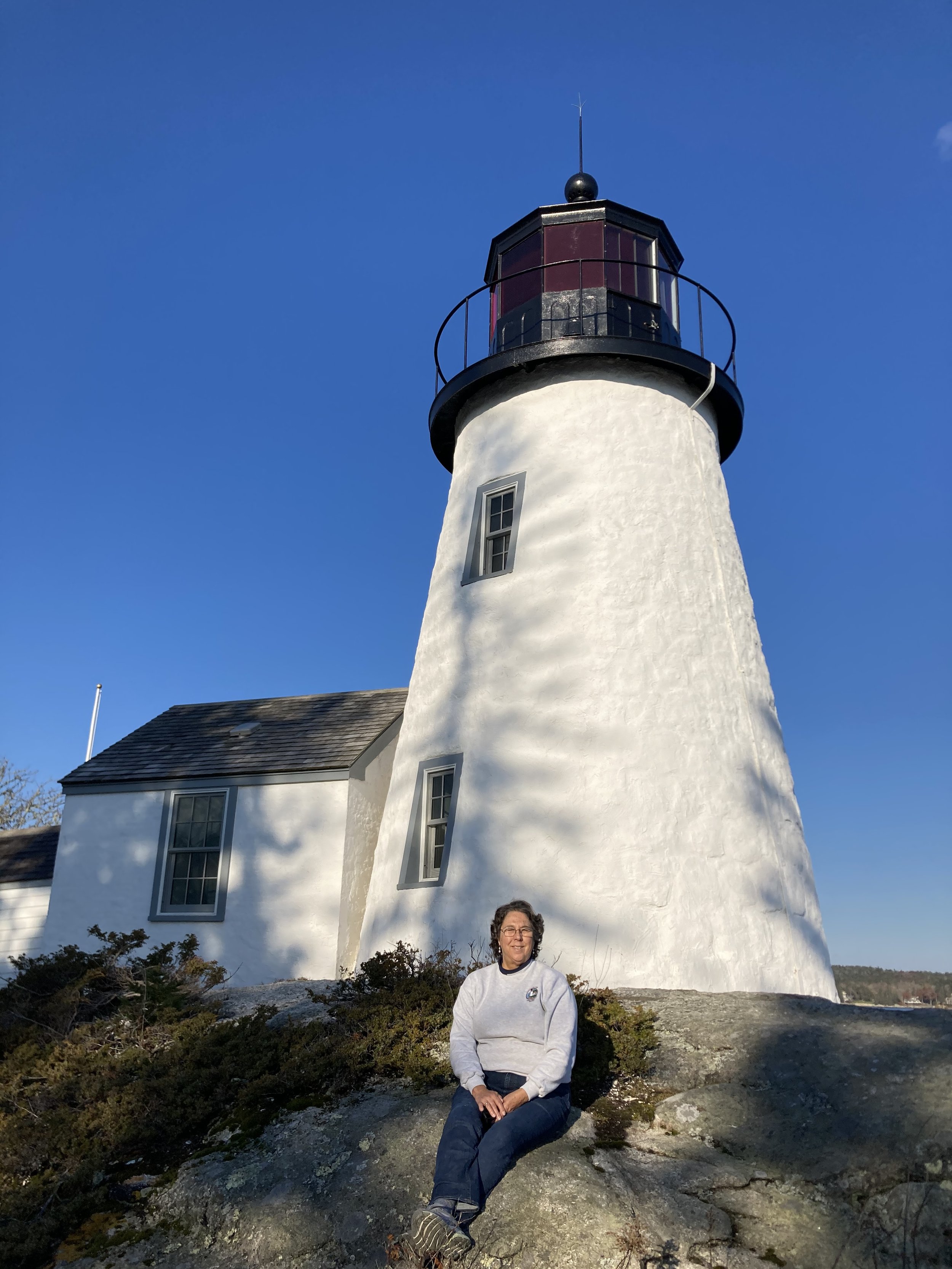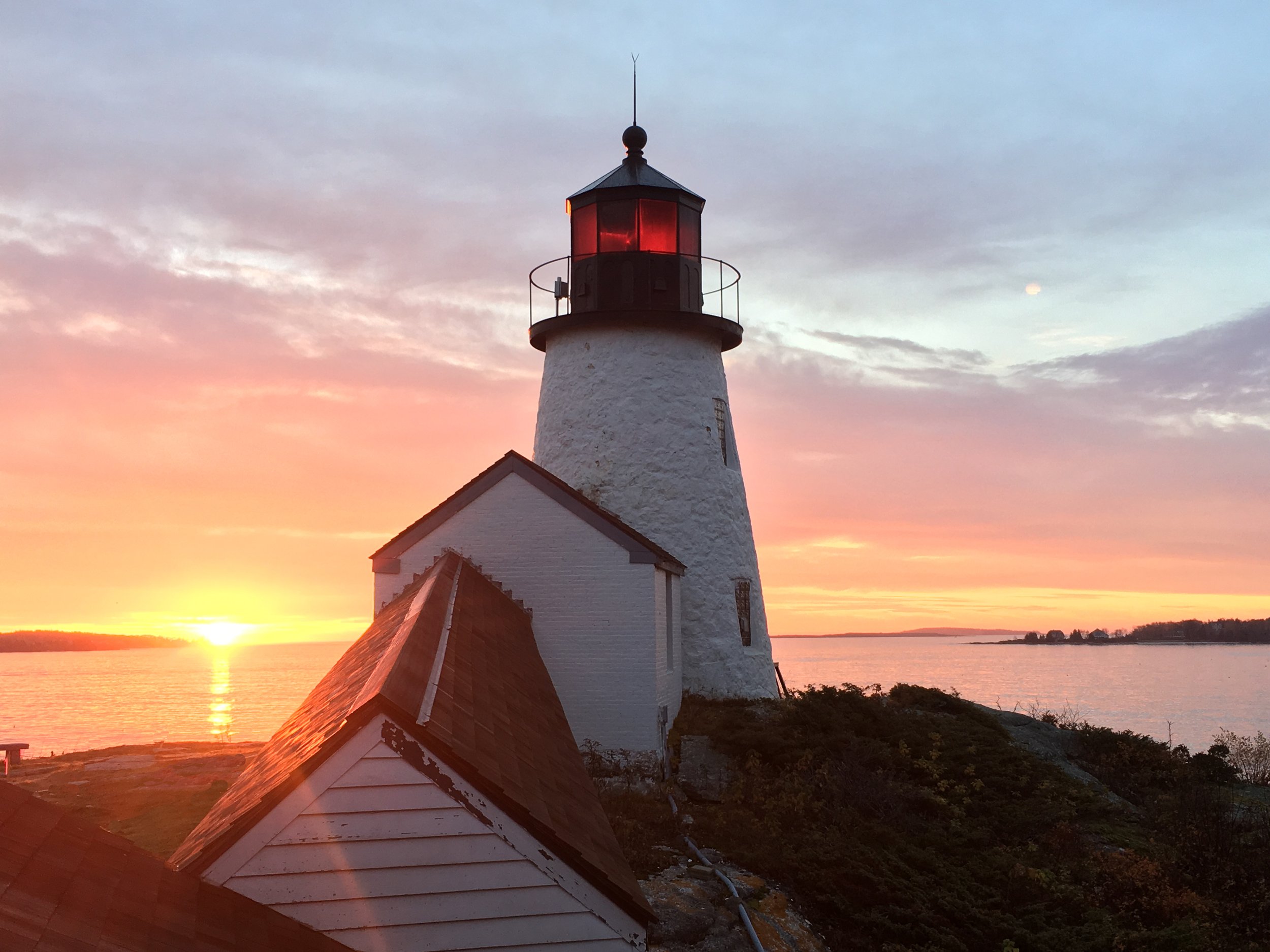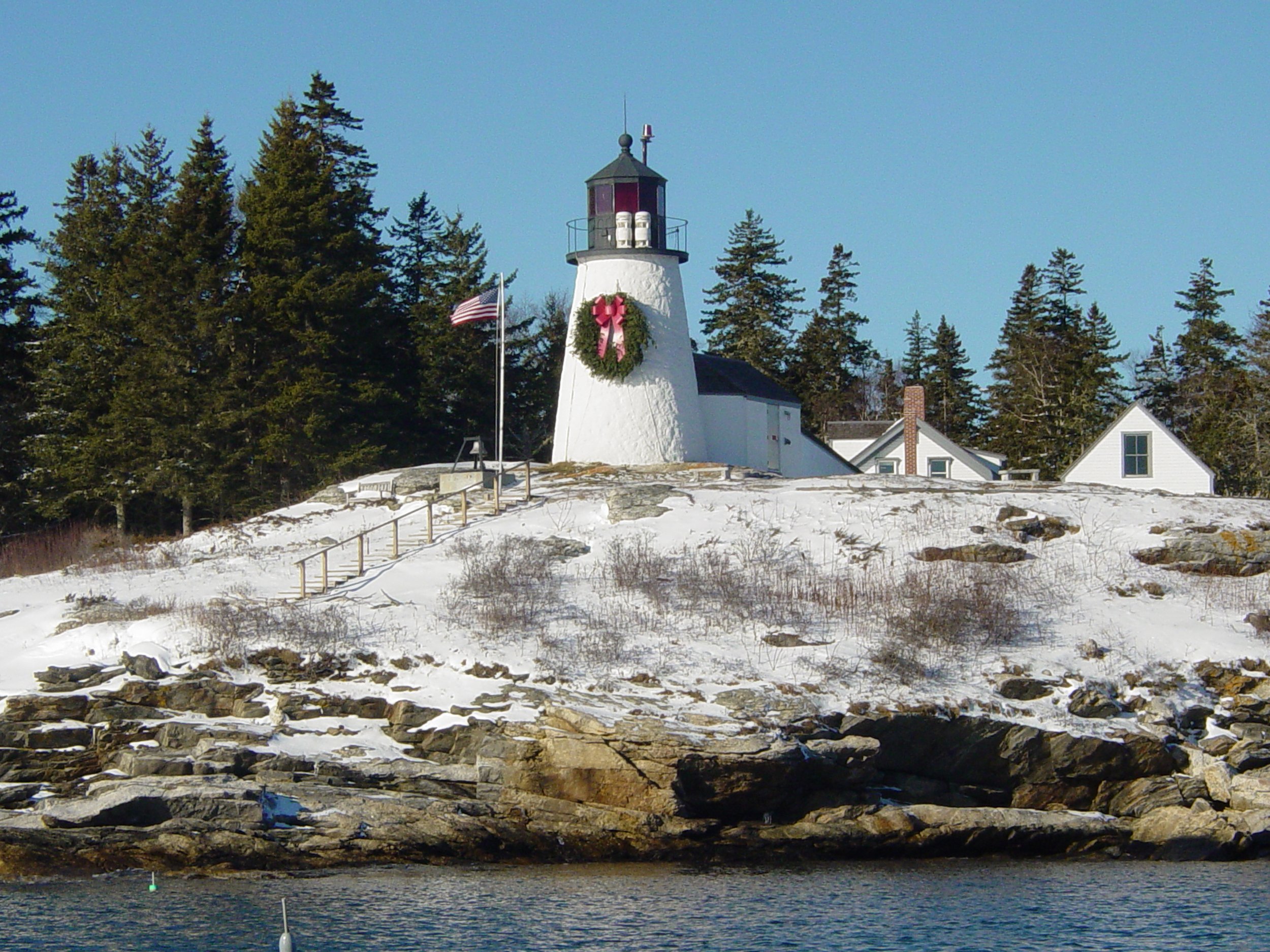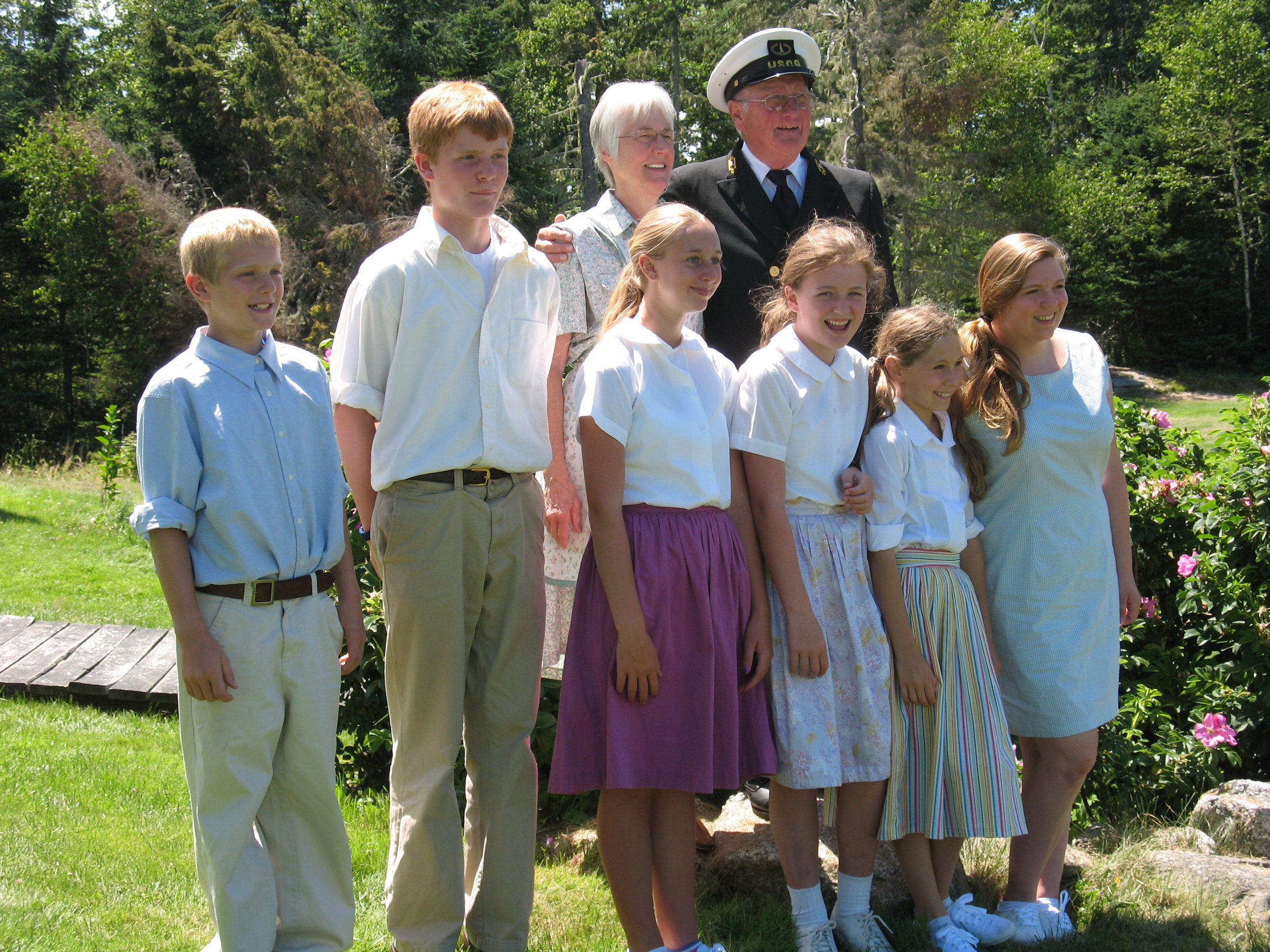On March 3, 1821, the 16th Congress appropriated $10,500 for the construction of the Burnt Island Lighthouse, along with two others along the coast of Maine. Secretary of Treasury William H. Crawford was assigned the task of selecting a suitable site, eventually selecting Burnt Island at the entrance of Boothbay Harbor. On May 25th, the federal government purchased the island for $150 from local businessmen Jacob Auld and Joseph McCobb. The government’s builders constructed a stone lighthouse and keeper’s dwelling using granite blocks cut from the island. On November 9, 1821, Keeper Joshua B. Cushing lit up the Burnt Island Lighthouse for the very first time. Thirty other keepers followed in his footsteps to illuminate Boothbay Harbor’s guiding light.
Built just one year before Maine became a state, the Burnt Island Light Station has served mariners for over 200 years. In fact, it’s considered the state’s oldest unaltered lighthouse. For most of that time, a light keeper served as on-site steward, but following automation in 1988, the attention and resources needed to conduct routine maintenance on the lighthouse, keeper’s dwelling, and outbuildings were lost.
Ten years later, the Maine Department of Marine Resources (DMR), with its Education Director, Elaine Jones spearheading the effort, gained possession of Burnt Island through the Maine Lights Program. A biologist by training, Elaine wanted to transform the island environment into a living classroom for science educators and students from across the state. The fact the island had a lighthouse of course was not lost on her. With the help of volunteers, they cleared fallen trees and brush, established public paths and gardens, added benches, built public restrooms, and installed a docking system and moorings to improve access. The culmination of these efforts was marked by the construction of an Education Center in 2006, complete with sleeping accommodations, to host day and overnight educational programs.
In 2008, Elaine partnered with the newly formed non-profit, the Keepers of Burnt Island Station (KBIL) to work towards the common goal of restoring the island’s gem. Their “Keep the Light Burning” capital campaign solicited donations from hundreds of people through gift-giving and special events, acquiring the funds needed to restore the station through private sources rather than taxpayer dollars.
Prior to commencing work, Elaine dedicated a great deal of time and effort conducting extensive research to document, justify, and guide the restoration process. She compared her newfound love of history to a puzzle, always needing to look for the next piece. Standards and procedures for restoration were developed in cooperation with the Maine Historic Preservation Commission, United States Coast Guard, and Maine Bureau of General Services. She obtained architectural drawings and photographs from the National Archives and Coast Guard Historian in Washington D.C., and the Coast Guard’s Civil Engineering Unit in Providence, RI. This research also led to the creation of a living history program in 2003 that is now facilitated by the Keepers of Burnt Island Station. The program centers on the powerful story of Joseph Muise, one of fourteen former keepers and keepers’ families who Elaine interviewed as part of an oral history project. It tells of Joseph’ life as a keeper and the way him and his family got by day to day.
The moment of truth finally arrived in 2020, when Elaine oversaw the half a million-dollar restoration of the light station, including exterior repairs, new roofs, heating system, septic system, interior upgrades, and the installation of a waterline from the mainland. The masonry light was still structurally sound, but in desperate need of repointing to reverse years of deterioration and prevent future water infiltration. The extensive metal elements, including the roof, decking, railing, astragal, and ventilator ball were severely rusted, requiring careful restoration. The lantern was restored, and windows reintroduced to recreate the lighthouse’s 1950s appearance, while making some concessions to permit its continued use as a navigational aid. Improvements to air circulation were also made to prevent the build-up of mold, mildew, and moss. The work shed, boathouse, and coal bunker all received new roofs, while the restoration of the keeper's dwelling (1857) included the installation of new historically appropriate windows to replace those that had been added in the late 20th century.
J.B. Leslie Co. of South Berwick and Marden Builders Inc. of Boothbay Harbor, Maine, served as the primary contractors, the former handling masonry and metalwork and the latter, carpentry. The project started in mid-June and lasted through October 2020. On top of the unique challenges of a historic restoration project, crews also had to carefully navigate the logistics of mobilizing large equipment and supplies to the island.
Burnt Island Light Station celebrated its Bicentennial in 2021 as a beautifully restored historic site for the people of Maine. It is now a place of learning for students, teachers, and members of the public; and will continue to be a recreational site for boaters and a navigational aid for mariners. Burnt Island and its rich history is now perfectly positioned to serve the public for another 200 years.


